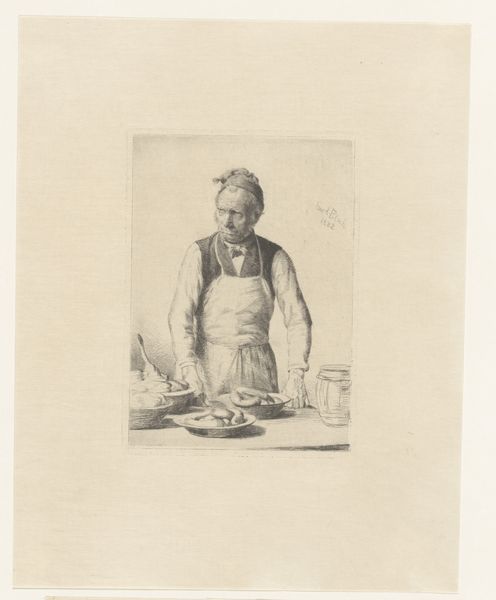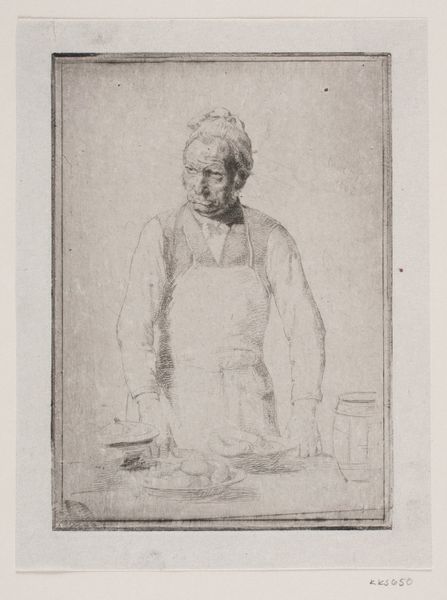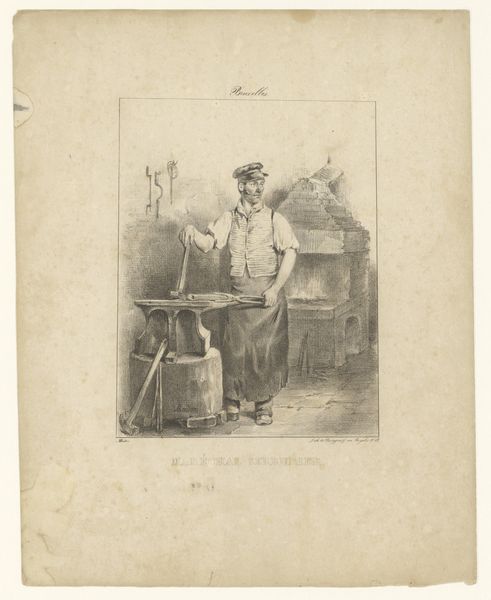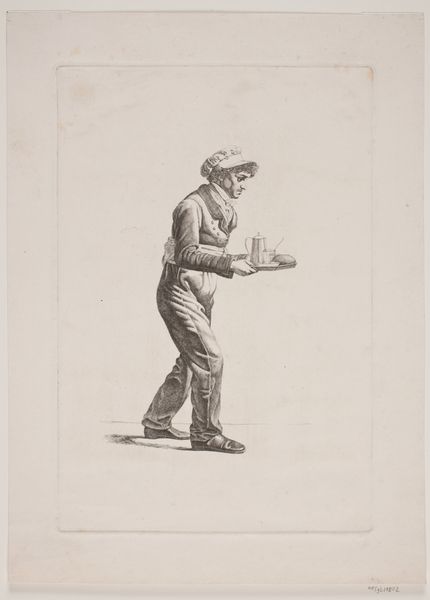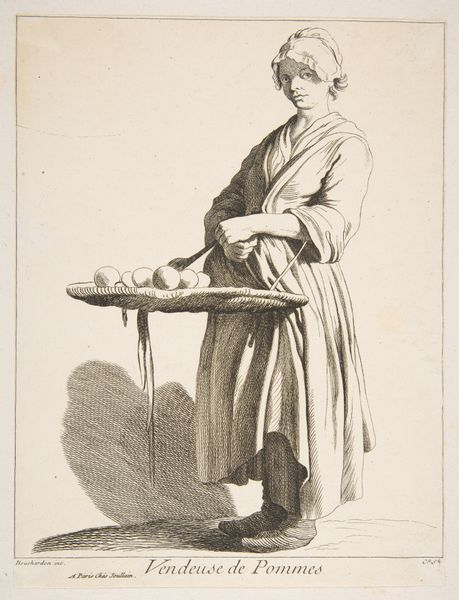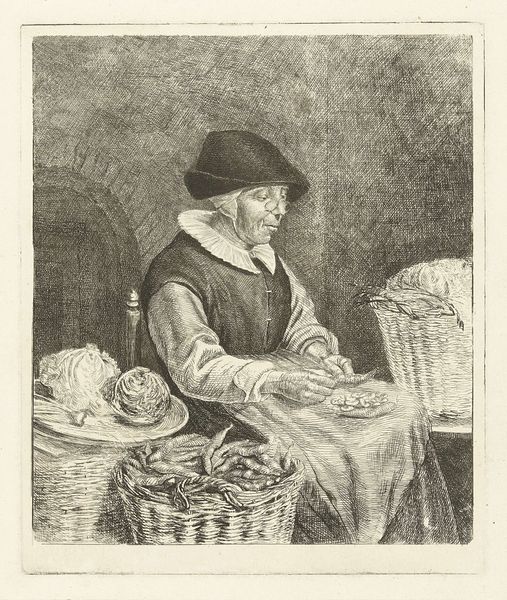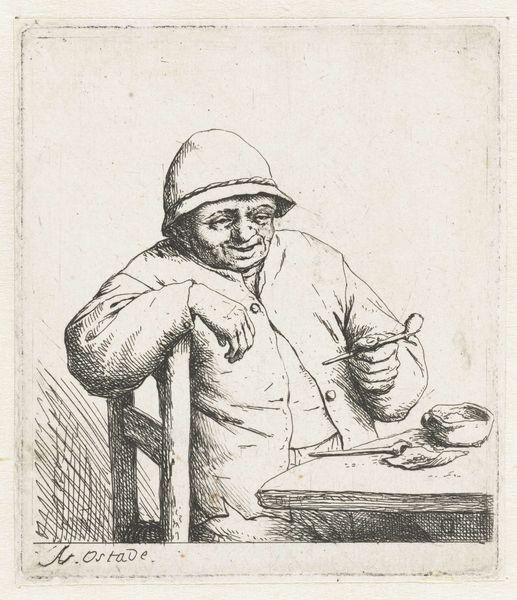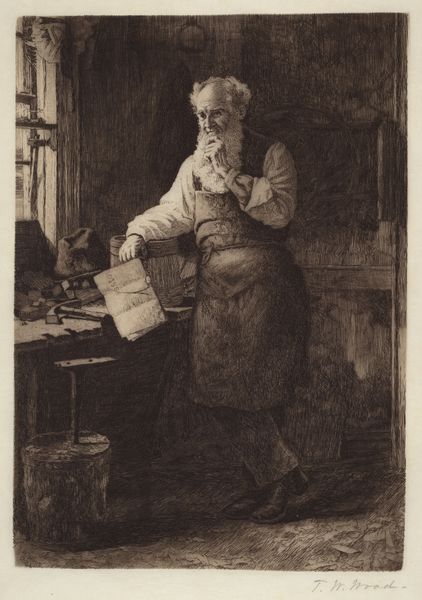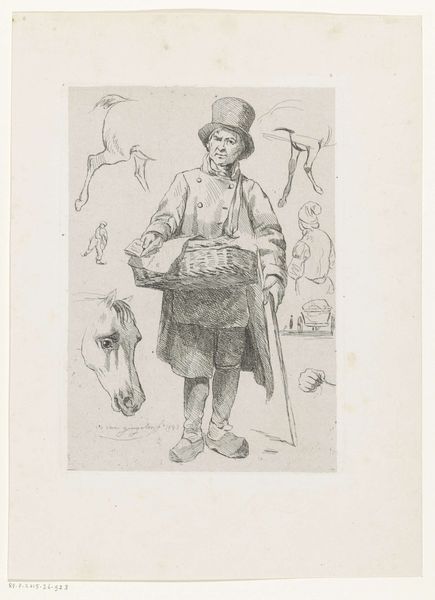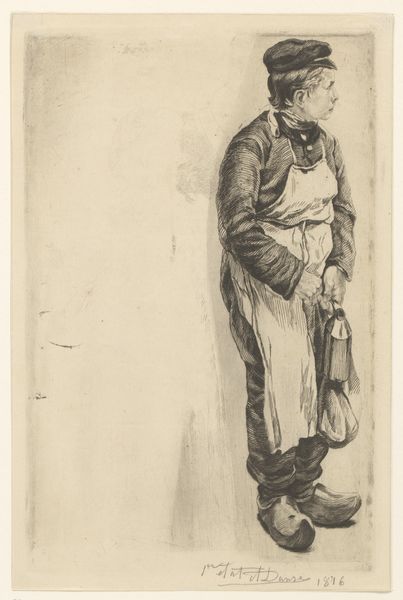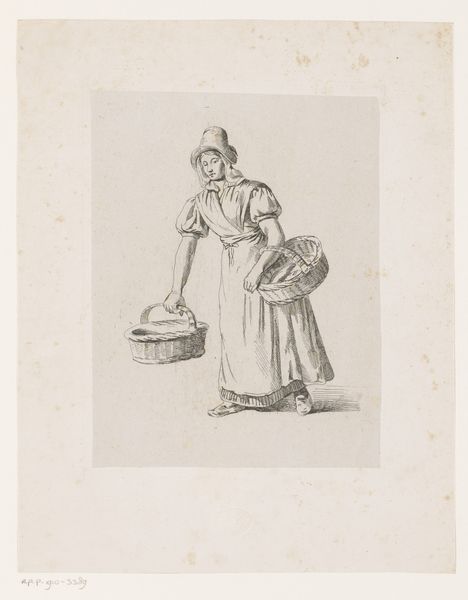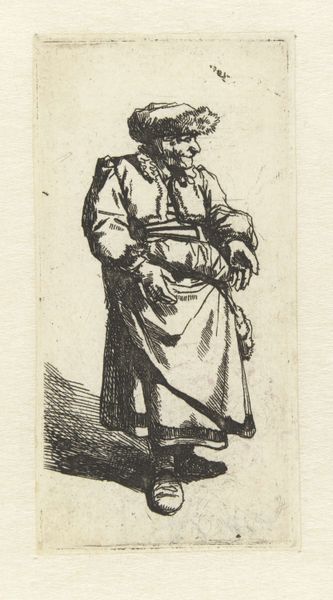
print, etching
#
portrait
# print
#
etching
#
portrait drawing
#
genre-painting
#
realism
Dimensions: 139 mm (height) x 101 mm (width) (plademaal), 315 mm (height) x 224 mm (width) (bladmaal)
Editor: Carl Bloch’s 1882 etching, “The Grocer at his Counter,” has a certain austere quality. The detail in his face is incredible for a print! What do you see in this piece from a formal perspective? Curator: The interplay of light and shadow, achieved through the intricate network of etched lines, constructs both form and texture with remarkable precision. Note how the varying densities of these lines articulate the grocer's furrowed brow and the subtle gradations on his apron. Editor: Yes, and there’s a definite contrast in textures. His face and hands are heavily detailed but the background almost disappears! Curator: Precisely. The artist manipulates visual information strategically, prioritizing texture and the formal relationships between line, tone, and shape within the composition. Consider the deliberate arrangement of the still life elements: bowls of indistinct edibles are horizontally composed and counterbalanced by the vertical orientation of the grocer. Editor: So, the composition isn’t accidental? It's carefully designed with visual balance in mind. Curator: Indeed. Notice also how the composition employs tonal contrasts. It enhances depth and establishes visual hierarchies. The manipulation of these elements underscores a clear artistic intent and transforms the mundane subject into a sophisticated arrangement. Editor: This has totally reshaped my perception. I had missed all these subtle artistic decisions focusing purely on the representational element. Curator: Observing the form refines the perception, doesn't it? Every element contributes meaningfully. Editor: Definitely. I now appreciate how technique itself generates layers of content and aesthetic quality in a work like this!
Comments
No comments
Be the first to comment and join the conversation on the ultimate creative platform.
